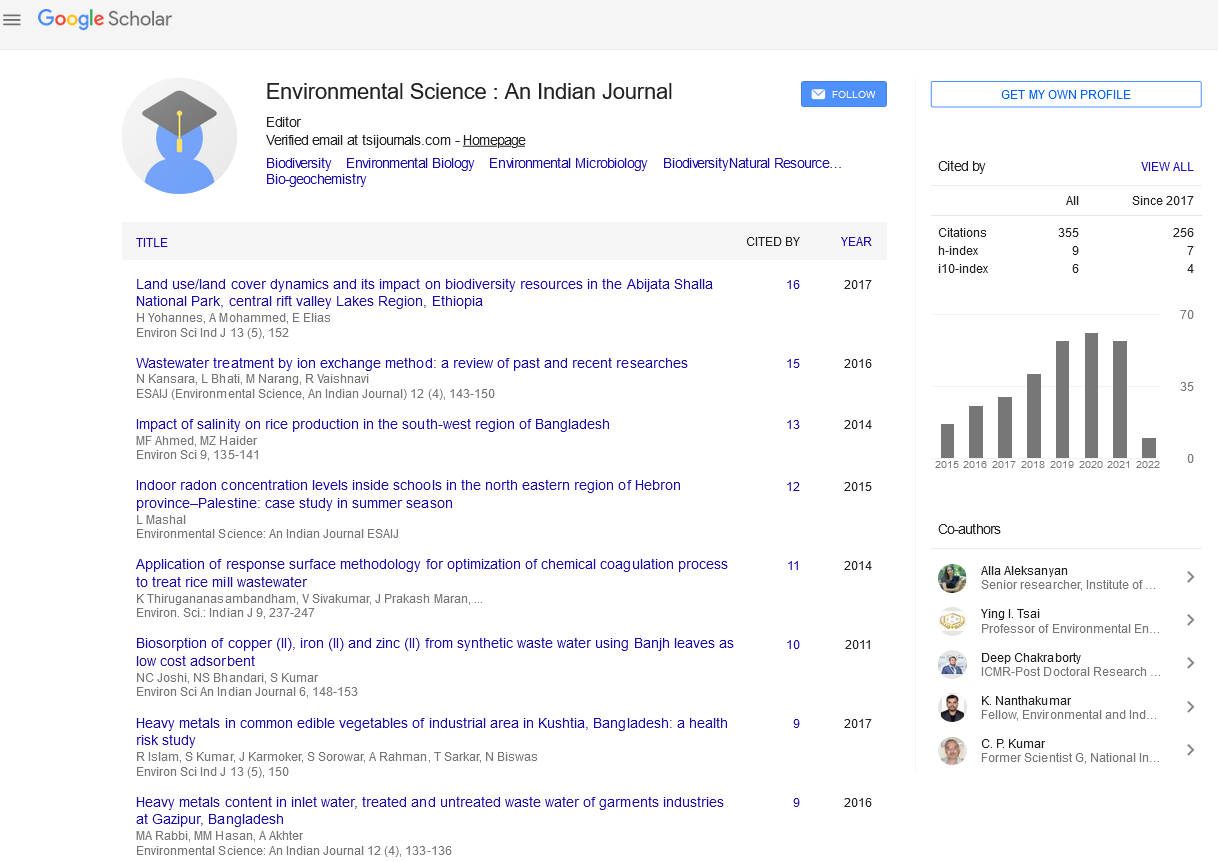Abstract
Evaluation of radiation hazard indices in an oil mineral lease (oil block) in Delta State, Nigeria
Author(s): M.O.Ajibode, G.O.Avwiri, E.O.AgbalagbaThe radiation hazard indices in anOilMineral Lease (OML) in Delta State have been evaluated. Soil/sediment and water sampleswere collected from ten oil fields in the Oil Block and the concentrations were measured using gamma ray spectrometric system. For soil samples, the mean value of Annual Gonnadal Equivalent Dose (AGED) of the ten oil fields was 380.37±38.4mSvy-1 and that forAnnual Effective Dose Equivalent (AEDE) (Outdoor and Indoor) were 66.95±6.9µSvy-1 and 267.79±27.5µSvy-1 respectively. The Excess Lifetime Cancer Riskmean valuewas 0.234±0.02 x 10-3. These show that the mean value for AGED is above the permissible value which is an indication of radiological elevation in the areas. Some of the areas have values of AGED, AEDE (Outdoor) and ELCR that were higher than the recommended limits. The radiation indices sources of water supply in the areas were also calculated. Mean values for AGED were 55.26±5.25 mSvyr-1, 47.84±5.13 mSvyr-1 and 104.18±9.28 mSvyr-1 for well, tap and river water samples respectively while the mean values for AEDE (Outdoor),AEDE (Indoor) and ELCR were 9.90±0.95 µSvy-1, 8.56±0.92 µSvy-1 and 18.78±1.68 µSvy-1, 39.60±3.78 µSvy-1, 34.24±3.68 µSvy-1 and 75.14±6.69 µSvy-1 and 0.0346 x 10-3±0.003 x 10-3, 0.0300 x 10-3±0.0300 x 10-3 and 0.0657±0.006 x 10-3 for well, tap/borehole and river water samples respectively.Although, most of the calculated hazard indices in water were lower than the permissible limits, they were still higher than the values from non oil producing areas which shows that the oil and gas activities could have impacted negatively on the radiological status of the environment. It can be concluded that there is significant radiological hazards to the people in the areas from soil/sediment samples which can be attributed to the oil activities in the area.

